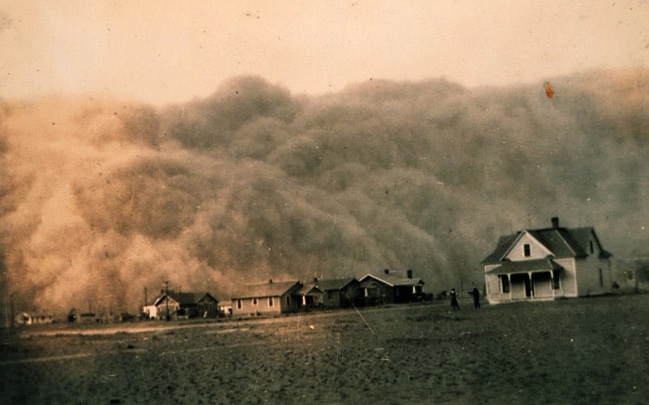
Thomas Jefferson referred to the "immense and trackless deserts" west of the Mississippi. Maps of the early 19th century referred to the "Great American Desert." And when settlers first began to move west in great numbers in the mid 1840s they moved as quickly as possible through the Great Plains on to Oregon and California. It was not until the Homestead Act in 1862 and later as railroads began to make cheap land available in Kansas, Nebraska, the Dakotas, Oklahoma, and Texas that farmers began to settle on the plains. In the relative wet years from the 1880s into the 1920s as new agricultural technologies took hold farmers sowed the plains in wheat, corn, and other crops, grazed cattle, and reaped tremendous rewards. Crops turned literally to dust, though, as drought coupled with agricultural practices unsuited to the open plains transformed the region into a giant dust bowl forcing large numbers of the area's population to give up their lives on the plains and to move west.
image from "Dust storm approaching Stratford, Texas," April 18, 1935, NOAA George E. Marsh Album downloaded from Wikimedia Commons, June, 2019.
